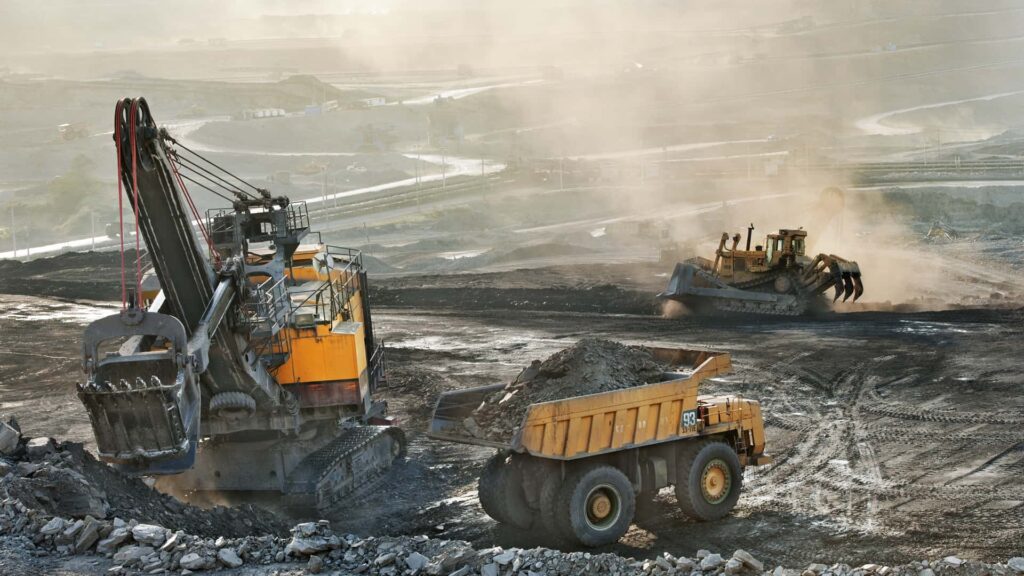When you hear the word ‘mineral,’ what comes to mind? Maybe it’s a beautiful gemstone with valuable healing properties like amethyst, or maybe it’s a hard metallic substance like iron or aluminum. Or, there might be something a little less desirable, such as coal or diamonds. Regardless of your perception of them, minerals are an essential part of how and where we live. They are present in everything on Earth and are even present in outer space. The naturally occurring mineral resources on our planet represent one of the most important resources in human history. In fact, they make up 80% of the Earth’s crust and are estimated to hold over 5 billion tonnes of carbon — more than all known fossil fuels combined! This means that exploring these hidden riches has the potential to help us address climate change, grow our economy, and improve the quality of life for everyone.
What is a mineral?
A mineral is a naturally occurring, inorganic solid substance that is solid silicon and oxygen atoms. While all minerals consist of these two elements, the specific elements that make up a mineral depend on where it is found and its specific chemical properties.
A mineral’s chemical properties determine what it is used for in manufacturing and what products it is used to make. For example, the chemical properties of quartz make it a good material for teeth and bones, and it is also used in many products like window glass, watches, and auto glass.
Naturally occurring minerals can also be used to produce a number of products that are essential to our everyday lives. For example, the production of aluminum is critical for our modern society, which is why we must explore new deposits of minerals like aluminum.
Mineral resources are naturally occurring substances
Mineral resources can be found anywhere on our planet and represent one of the most important resources in human history. They are present in everything on Earth and are even present in outer space.
Most minerals have been formed as a product of the Earth’s crust over millions of years through the processes of volcanism and tectonic forces. This means they are present in the Earth’s crust and are found in very limited quantities.
Mineral resources are critical to our modern society and economy. We use the vast majority of them to produce the goods and services that keep our economy running and our quality of life high. There are many different minerals that are used in very specific ways, and they are found in limited quantities in many locations around the world.
There are 16 major mineral groups
In order to better understand the importance of minerals, it helps to know about the sub-groups within them. There are two major groups of minerals found on Earth: metamorphic and igneous rocks.
Metamorphic Rock – Common Metamorphic Rocks Chlorite (Copper-Zinc) – Iron – Molybdenum – Potassium Feldspar (Calcium – Silicon) – Feldspars Biotite (Iron – Magnesium) – Fluorite (Calcium – Sodium) – Gold – Gypsum (Sulfate) – Magnetite – Malachite ( copper – chlorine) – Opal ( sodium-potassium) – Quartz (silicon dioxide) – Serpentine – Silica (quartz) – Sphalerite (Iron – Zinc) – Spinel – Staurolite (Iron – Nickel) – Talc (Silica) – tourmaline (Mg, Fe) –
Igneous Rock – Common Igneous Rocks Andesite – Basalt – Granite – Magnetite – Olivine – Peridot (olivine) – Pyroclase – Rhyolite – Spinel – Sulfur – Topaz – Turquoise –
How mineral resources exploration works
Mineral exploration is a process by which resources on Earth are evaluated for the possibility of finding new deposits. This is done by analyzing the resources and looking for evidence of their existence.
There are many different methods used to find minerals and many different people who conduct mineral exploration. The most important step in mineral exploration is finding out what is in the ground.
The minerals that are found on Earth are usually composed of silicon and oxygen; there are also traces of other elements like iron, magnesium, and sodium. By analyzing the minerals that are present, it is possible to infer what types of rocks they are associated with.
This knowledge of what is in the ground, along with the resources that are present, gives a good idea of what to look for when exploring further. This is when a geologist is actually out in the field looking at the ground to see what’s there.
The economic significance of minerals
The extraction, processing, and use of mineral resources are critical to our modern economy. They are byproducts of natural resources and the key to the modern economy. In fact, they make up 80% of the Earth’s crust and are estimated to hold over 5 billion tonnes of carbon — more than all known fossil fuels combined! This means that exploring these hidden riches has the potential to help us grow our economy and improve the quality of life for everyone.
That’s a lot of new products and services that could improve the quality of life for everyone.
A look at some beneficial minerals you should know about
This is just a sampling of the many minerals found in nature and the uses that are made for them.
Calcium – This mineral is used to make teeth and bones. It is also used in the production of glass and plastic, as well as paint. It is also used in the production of paper, rubber, and cement.
Copper – This mineral is used in electronics, construction, water treatment, and transportation. It is also used to make bronze, which is an alloy of copper.
Iron – This mineral is used in energy production, construction, and food production. It is also used in the production of steel and is present in visible light from stars as a result of its gravitational attraction to other elements.
Manganese – This mineral is used in the production of steel, jet engines, and batteries. It is also present in the human body and is involved in the metabolism of iron and amino acid production.
Potassium – This mineral is essential for the human body, particularly in the regulation of digestion. It is present in fruits and vegetables and is used to make paper, plastic, and fertilizer.
Silver – This mineral is found in the Earth’s crust, and it is used in electronics, water treatment, and building materials. It is also used to make silver jewelry and is present in the stars as a result of its gravitational attraction to other elements.
Sulfur – This mineral is found in hot springs and is used in the production of fertilizers in agriculture and explosives. It is also present in the human body and is present in stars as a result of its gravitational attraction to other elements.
Mining for Minerals Resources
In Sudan, several companies are operating in the mining sector, and this is due to the various precious metals existing in many areas of the country. RIDA Group is one of the leading mining companies in Sudan, and it was founded in 1993. RIDA is also the first company to introduce artisanal gold tailings processing in Sudan. The company operates in several locations in Sudan, such as AlAbedeya, in addition to locations outside Sudan, in Eritrea, Guinea, and Morocco. The company has a CIL plant, a heap leach in AlAbedeya, and a drilling section.
For more information, visit our website:


